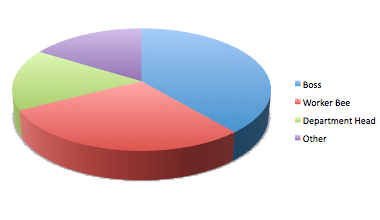Read Part One of this series here.
You can get lost in the numbers. But sometimes it’s fun – and enlightening.
Visitors spend an average of 8.3 hours in 2.3 days on a tradeshow floor, giving exhibitors the chance to reach thousands of potential customers in a very short time (Center for Exhibition Industry Research, 2008). 39% of visitors come to the same show at least two years in a row, giving exhibitors a loyal base of committed potential customers (CEIR, 2008). 50% of attendees already have a buying plan when attending shows (CEIR, 2007). And finally – decision makers love exhibitions: 87% of survey respondents state that national exhibitions are an ‘extremely useful’ source of needed purchasing information (CEIR, 2004).

Tradeshows account for an average one-third of a company’s annual marketing budget. Much of that money is simply flushed down the drain. Why? Because many company tradeshow and exhibit managers don’t have a thorough, detailed plan for each show and often the booth staff is unaware of the reason for even being at the show, other than the general ‘business-building’ excuse.
Companies continue to go to tradeshows in spite of the amount of money that is spent. In fact, the event industry is on the rise. Since the recession late in the last decade, most industries and events have seen climbing attendance.
Tradeshow marketing is attractive because the cost of reaching a potential customer face-to-face is $219 with an exhibition lead, compared with $1,039 without one (CEIR, 2009). Add to that the fact that as human beings, we relish the idea of meeting colleagues, vendors, clients and prospects face-to-face: two-thirds of visitors place a high level of importance on face-to-face interaction during the pre-purchasing stages of the buying process (CEIR, 2003). Executives cited conference and tradeshow participation returns ranging from $4.00 to $5.91 per dollar invested (Oxford Economics, 2009).
With all of those numbers floating around, it’s attractive to leverage a series of tradeshow appearances into growing sales, a burgeoning market and a healthy bottom line. If only we knew exactly where all that money was going, right?
So here’s a series of questions that you should ask yourself regarding your tradeshow marketing budget.
- What is your annual tradeshow marketing budget?
- What percentage of the company’s overall marketing budget does the tradeshow division make up?
- Who determines what the annual tradeshow marketing budget is?
- How often does that assessment take place?
- Is that assessment shared throughout the company, or is it generally kept quiet?
- Is the budget increasing, decreasing or staying about the same?
- Is your current budget enough for what you plan to do? What you’d like to do?
- What’s the breakdown of the budget?
- Booth space rental (shipping, drayage, other show costs)
- Booth upgrades, etc.
- Travel/lodging
- Promotion
- Giveaways
- Product samples/displays
- Other
- What is the company decision-making process for creating a new tradeshow booth?
- Does the company’s marketplace success directly impact your tradeshow marketing budget?
Items to include in your budget – feel free to download the COE budget (link):
- Booth Design and construction
- Show Services
- Personnel
- Advertising and Marketing
- Shipping
- Lead Gathering
- Post Show Sales Data
- Leads
- Cost per lead
- Number of known show sales
- Average sale
- ROI
- Miscellaneous
Even if you aren’t the person who crunches all the numbers on a regular basis, if you can make yourself do this on a regular basis, not only will you understand the bigger picture much better, but you become more valuable to your company!
Download a free Tradeshow Marketing Budgeting Template from Communication One Exhibits here (Excel spreadsheet direct link).
Here’s the rest of the series:


Diana Robbins ,
We are a technology startup entering the trade show world with a digital chance to win platform for the tablet. Our business has focused a lot on in-store experience to help retailers engage customers, collect data, and drive sales.
As our incoming calls for trade shows has increased drastically over the last few months, we recognize that many companies are adopting tablets for trade show use. Scratchd uses digital chance to win experiences to increase sales and brand perception, while providing a simple way for businesses to collect data on their audience for further follow up.
How much of the budget do you feel should be allocated to tablet software solution/digital data collection?
Thanks and look forward to staying in touch.